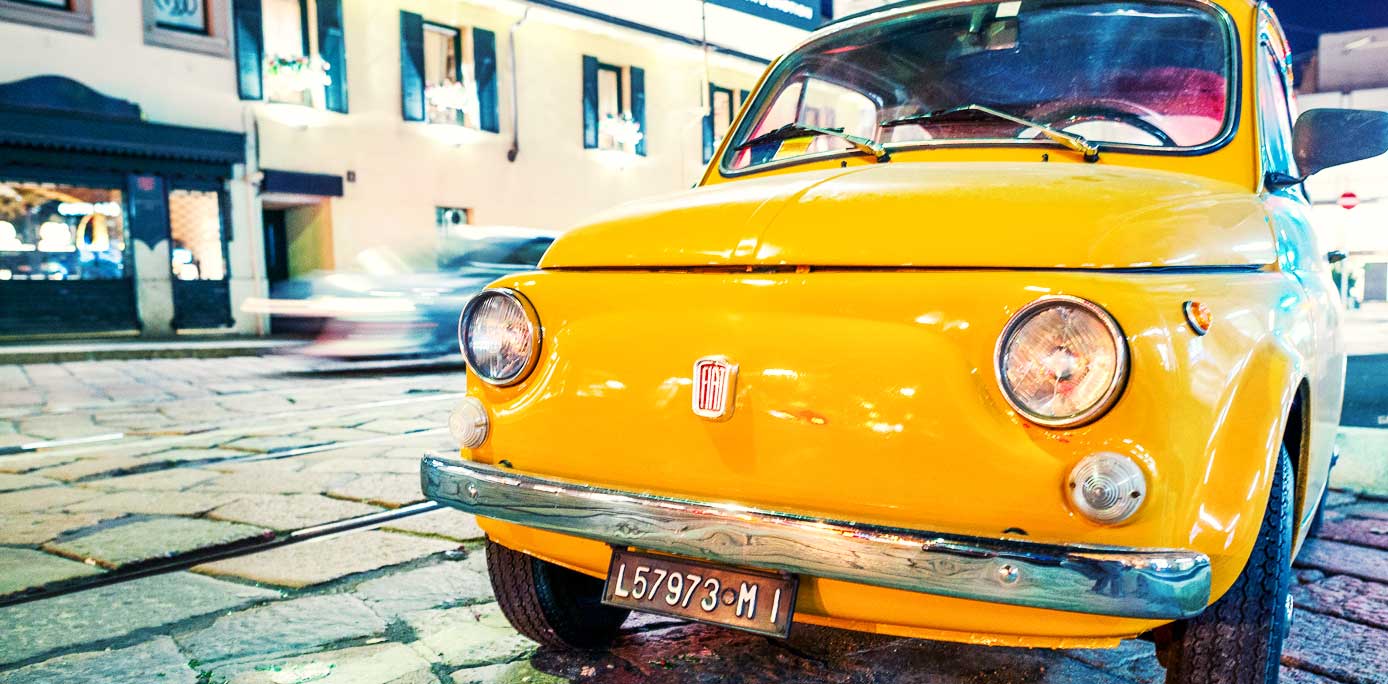The iconic FIAT 500, symbol of Italy’s post war economic renaissance, became part of MoMA’s permanent collection last year, but 2019 brings even more lustre to the tiny Italian four-wheels, as it will be one of the centrepieces of The Value of Good Design exhibition. The kermess will take place from the 10th of February to the 27th of May and will tell the amazing story of industrial design, a story made of beauty, history and exceptional versatility.
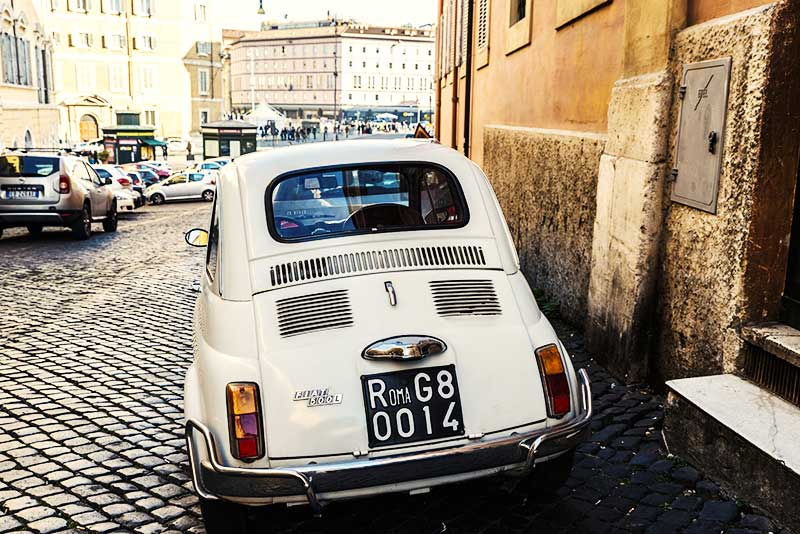
Even today, it’s not unusual to see a 500 around the streets of Italy © 22tomtom | Dreamstime.com
What a great achievement for our beloved 500, a car whose image still speaks to the years of the Italian economic boom, times of carefree happiness after decades of poverty, war and anguish. Martino Stierli, the Philip Johnson Chief Curator of Architecture and Design at MoMA declared to La Repubblica that “Fiat 500 is a true icon if automotive history that managed to change the way cars were designed and produced in Italy. This is why,” Stierli continues, “we decided to add this masterpiece of daily life to our collection: it allows us to widen MoMA’s storytelling about automotive design.” MoMA made a statement also in the choice of which 500 car to exhibit, picking a series F model – one of the most common – that well represents the beauty and extraordinary innovation it embodied when it first appeared.
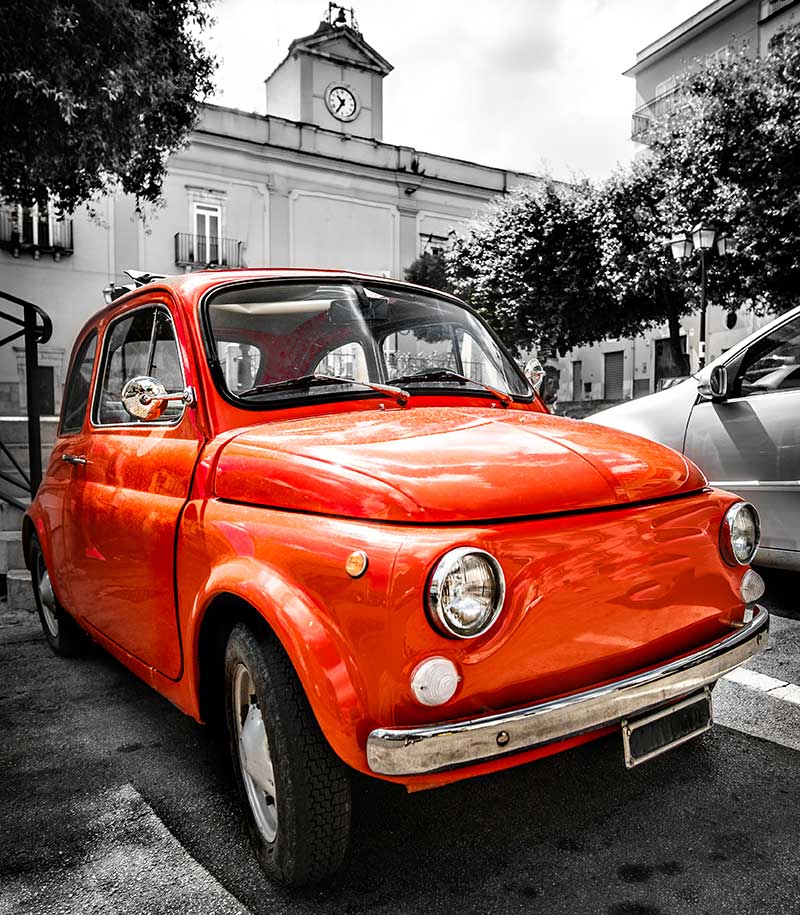
500 was created by FIAT engineer Dante Giacosa © Angelo Cordeschi | Dreamstime.com
But in these early days of 2019, FIAT 500 makes the headlines, as said, especially for its presence in The Value of Good Design exhibition, where the most influential and life-changing creations of the past 80 years take the stage, from home appliances to cars, all the way to glass, ceramics, sport equipment and toys. Taking inspiration from MoMA exhibits from the 1930s to the 1950s, the idea of curators is to show how good design went hand in hand with technological innovation to create products that were finally widely available to all: a celebration of beauty, then, but also of the typically modern phenomenon of market’s democratization. By placing an accent on the central values of 20th century society, The Value of Good Design wants to be thought-provoking and engage the public with considerations about what we consider to be “good design” today.
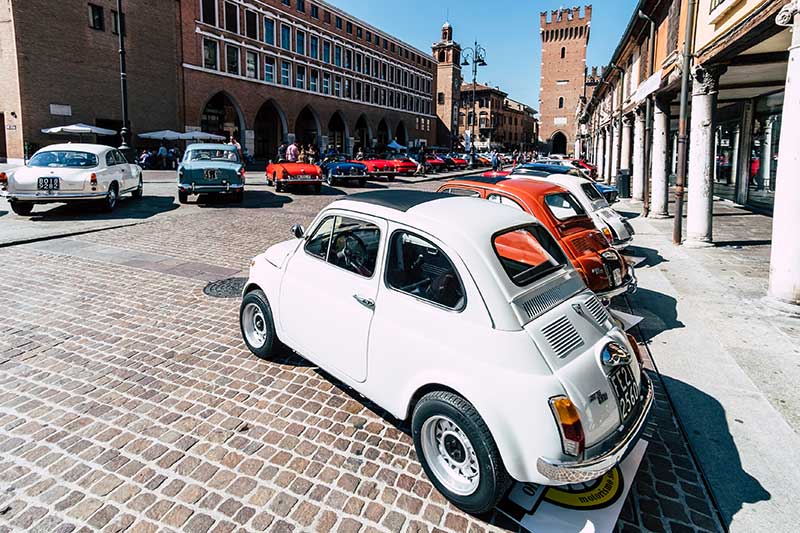
Compact, simple and fun: this are, still today, the most striking characteristics of FIAT 500
FIAT 500 is a real symbol of the amazing value of design in a social context. Price wise, it was the first car accessible to all, thanks to a wise choice of economic but quality materials used to create a reliable product. Production began in 1957, with more than 4 million models sold around the world between then and 1975. Design choices were essential to make it so popular, because FIAT 500 wasn’t only cheaper than other cars, but also extremely appealing from an aesthetic point of view: it was fun and colorful, just what the world needed after the gloom and pain of years of war and economic struggles.
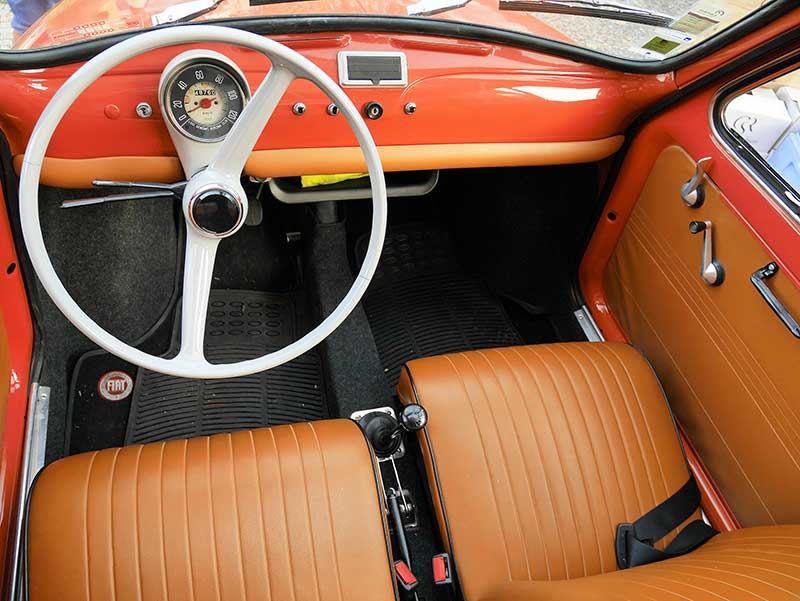
FIAT 500 is a real symbol of the amazing value of design in a social context © | Dreamstime.com
The mind behind it was that of Dante Giacosa, who started working for FIAT in 1927 and who had already ideated the original FIAT Topolino, the precursor of 500; in his mind, 500 had to be the ultimate city car, small and easy to drive and park, but with plenty of space to meet the needs and necessities of a booming and suddenly wealthier society. In spite of its small dimensions, 500 packed loads of internal space, enough to sit 4 passengers. The soft, compact design of its body made it a hit also from an aesthetic point of view: it wasn’t only functional, it was beautiful and people bought it because of that, too. FIAT rode high the hype about its tiny new car, creating a variety of models, including a cabriolet version, a real treat to see and drive.
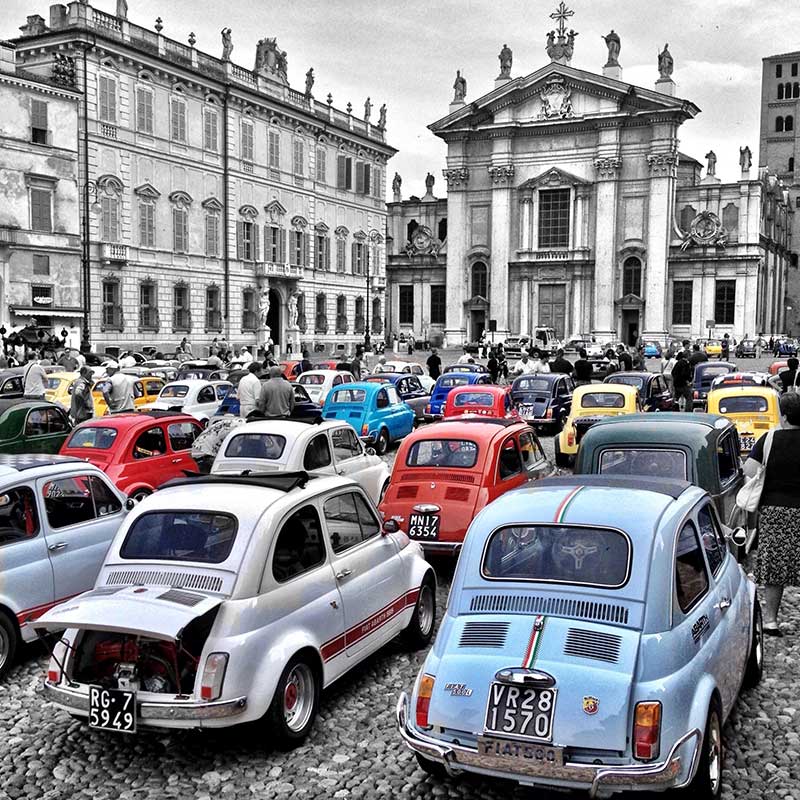
FIAT 500 is not only a symbol of Italian design’s excellence, but also of the typically post-war attitude to seek and find the sunny, positive side of life © Lucag75 | Dreamstime.com
Today, the original design 500 is a collector’s piece, with millions of fans everywhere in the world; in Italy, it’s not unusual to come across 500 Fan Clubs and festivals, where keen owners drive and show their restored and perfectly maintained models to a community of estimators.
All this is witness to the true success of Giacosa’s work and of the concept behind it: an attentive choice of materials, associated with innovative yet practical design makes for products that are not only bound to be successful, but also to last in time; after years when 500’s style changed completely and the car looked nothing like the original, today’s models are nothing more than a modern reinterpretation of the beautifully balanced car Giacosa conceived all those years ago, with the same appeal and, if you ask me, with the same ability to put a smile on the face of whoever sees and drives them. Because, let’s not forget it, one of the winning points of the original FIAT 500 was just that: it would put a smile on your face. It was the first car to abandon the elegant but stern designs of 1930s and 1940s models such as Balilla, Ford 7W or Citroën 7, to embrace a breezier approach to automotive aesthetics, an approach made of soft lines, colors and comfort finally available to the mass market.
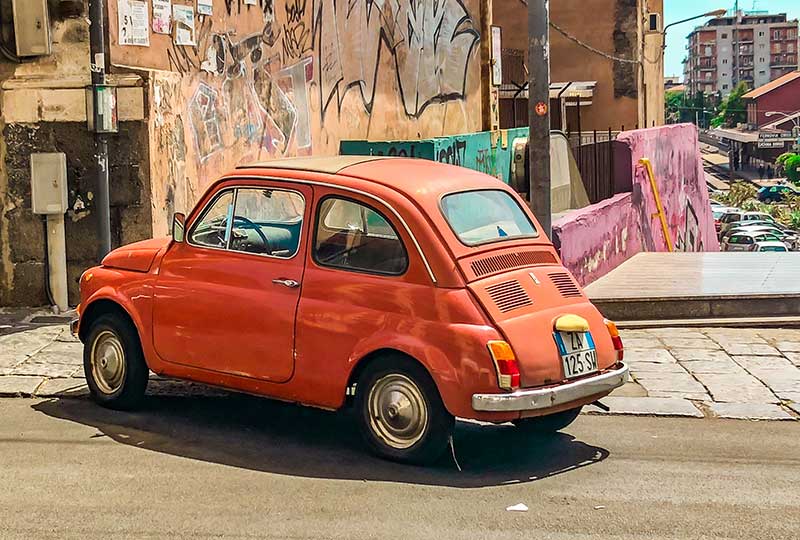
FIAT 500 is not only part of MoMA’s permanent collection, but is also at the heart of The Value of Good Design exhibition © Giovanni Gagliardi | Dreamstime.com
The world of the 1950s came from 20 years of struggle and war, during which faith in the future had been lost and fear had become the norm. Then the war ended and economic and social reconstruction began: suddenly, there was hope for a better life. With it came a whole new approach to everyday life and a thirst for improvement, for novelty, for progress: there was a true need to live life to the full, finally without fear for the future. It is in this incredible atmosphere that FIAT 500 was conceived and its design is mirror to it: it was sturdy and built to last, but it came with a small price tag, so that all could enjoy the practical advantages of owning a car. It was small and easy to take care of, but packed a lot of space so that a whole family of four could travel in it, making short breaks to the countryside, or even to the sea, easier to achieve. With its compact, rounded appearance, FIAT 500 had a friendly, unimposing look that appealed and captivated consumers and well embodied the needs and tastes of a society seeking a bit of lighthearted fun after the gloom of war.
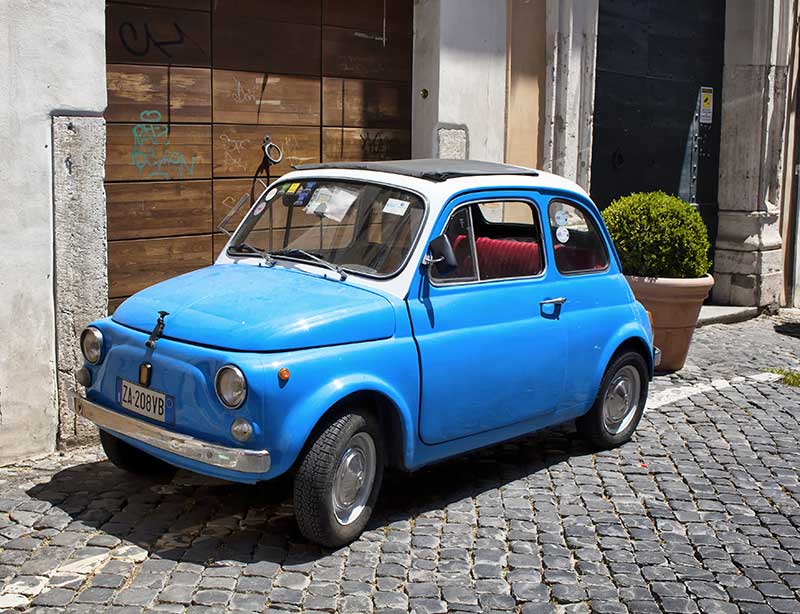
Design choices were essential to make it so popular, because FIAT 500 wasn’t only cheaper than other cars, but also extremely appealing from an aesthetic point of view © Theendup | Dreamstime.com
The reasons for FIAT 500’s presence in MoMA’s permanent collection and in The Value of Good Design’s exhibition are many, but maybe it is really in this socially innovating and somehow liberating aspects of its design we should seek its most profound value. In 1957, Giacosa showed that good design could be for all and that beauty, usefulness and quality could be accessible to all pockets. I dare say there is something very ancient – and somehow very Italian – in this attitude, something that bring us back to our forefathers and the way they would get the best from the humblest of things and make beauty with the sole wealth of their creativity and practical sense.
This is why FIAT 500 is not only a symbol of Italian design’s excellence, but also of the typically post-war attitude to seek and find the sunny, positive side of life: driving it, in those years, was just like smiling at the future.
Looking at an old FIAT 500 brings back a bit of that sense of awe and faith in what’s to come characteristic of the 1950s and 1960s: something we, without a doubt, need greatly today.
The Value of Good Design is part of MoMA’s Spring calendar. It is opening on the 10th of February 2019 and will run until the 27th of May. For more information and tickets see www.moma.org.
